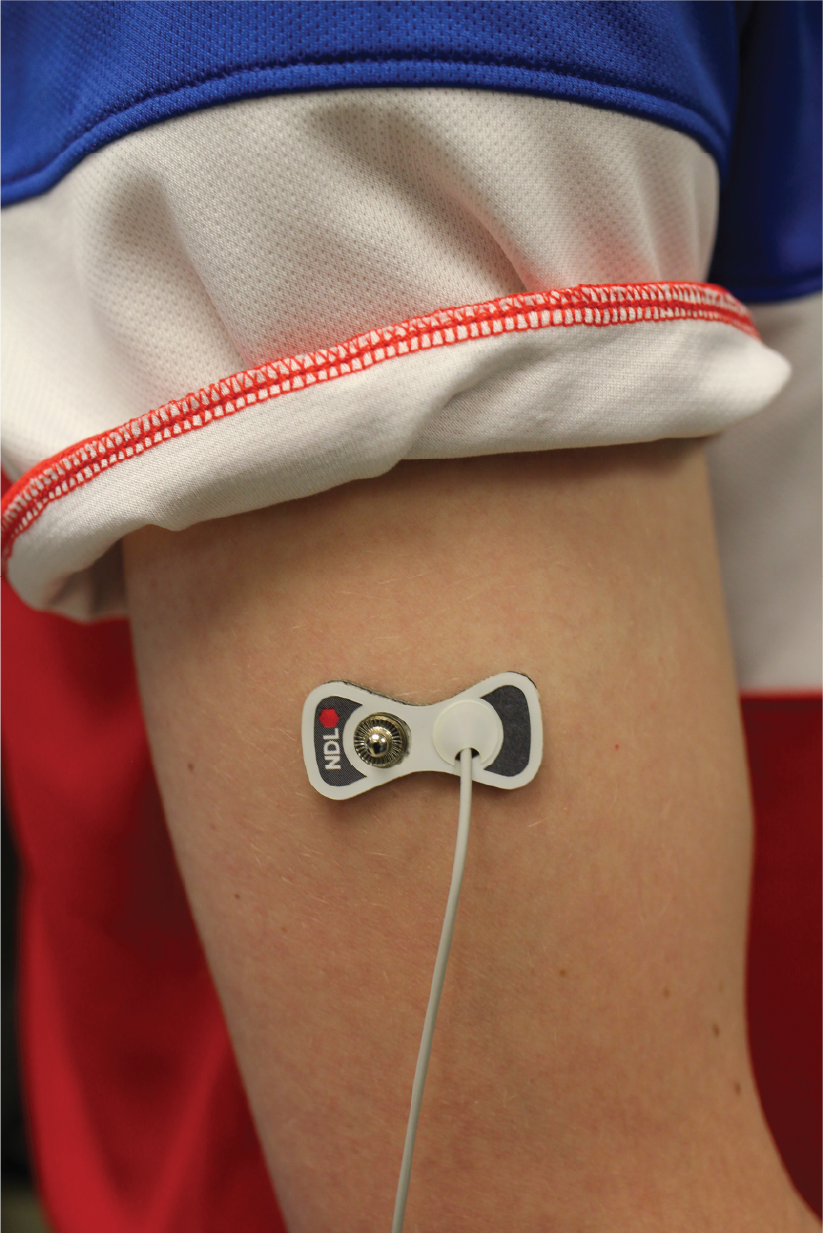
University of Cincinnati biomedical engineers say sensors that monitor interstitial fluid could be the next frontier for wearable technology. Image Credit: Mark Friedel.
Why we see it as a valuable diagnostic fluid is continuous access. With blood, you can’t easily take continuous readings. Can you imagine going about your day with a needle stuck in your vein all day? So we need other tools.
Mark Friedel, Study Co-Lead Author and Doctoral Graduate, University of Cincinnati
Alternatives have been searched for by scientists to track the wellness and health of a person. Sweat is known as a good medium for quantifying some things like anxiety or stress since it consists of hormones like cortisol. However, the body is abundant with other chemicals that are not so easily discharged in sweat, stated Friedel.
Friedel stated, “Sweat glands are big filters that don’t allow everything to pass through. So more than half of the things we want to monitor have no access to sweat at all.”
Blood is known as the gold standard for health monitoring. However, people also consist of liters of interstitial fluid that make up as much as 15% of their body weight.
Friedel stated, “The key feature of blood that makes it so advantageous is we understand blood really well. If you have something in your blood, we know what will happen to your heart or your liver.”
Scientists state that interstitial fluid consists of several similar chemicals in similar proportions as blood, thereby offering a possible alternative to expensive and tedious laboratory work.
The study described several methods by which doctors could sample interstitial fluid, from employing suction to the skin to deploying microdialysis.
As biomedical engineers, one of our greatest goals is to help people better manage their health by making diagnostics more accessible.
Ian Thompson, Study Co-Lead Author, Stanford University
Thompson added, “A big barrier to this accessibility is that most current diagnostics rely on blood sampling, which can be painful and requires trained personnel to perform. Thus, in recent years there has been growing interest in using interstitial fluid just under the skin as a diagnostic sample that is more accessible and less painful to extract.”
In UC College of Engineering and Applied Science Professor Jason Heikenfeld’s Novel Devices Lab, students are coming up with sensors to quantify hormones and other chemicals in interstitial fluid. They make use of microneedles below 1 mm in length to help in piercing the skin with the help of a small patch.
Friedel stated, “If you had a splinter, it probably went deeper into your skin than our microneedles. They’re generally painless. I don’t feel it most of the time. The most uncomfortable part is removing the tape that holds the device down.”
Friedel stated, however, even if one is not aware that it is there, the body does. Also, this minute reaction could impact the test outcomes.
There’s a Schrödinger’s observer effect with interstitial fluid. Any time you try to collect and measure it, you inherently change the fluid itself. If you stick a needle in your skin, your body becomes inflamed and then your [sample] levels change.
Mark Friedel, Study Co-Lead Author and Doctoral Graduate, University of Cincinnati
Friedel added, “For continuous biomonitoring, we want to know those concentrations as they are when you’re not being poked with a tiny needle. That’s why it’s such a challenging fluid that hasn’t been used outside of diabetes monitoring.”
Even now, scientists say, interstitial fluid has huge promise for tracking health via wearable technology. This could aid doctors in monitoring the efficacy of drugs to guarantee the correct dosage or offer an early diagnosis of illness by tracking the immune system.
However, according to Friedel, there is a lot more to be studied.
Friedel stated, “We’re trying to unlock the box and read the instructions inside to understand what’s in interstitial fluid and what the potentials are for exploiting it.”
UC’s Friedel collaborated with co-author Heikenfeld, UC’s James L. Winkle College of Pharmacy, the Sandia National Laboratories in New Mexico, and Southeast Missouri State University.
The study was financially supported via grants from the National Science Foundation, the U.S. Air Force Office of Scientific Research, and the U.S. Office of Naval Research.
Journal Reference:
Friedel, M., et al. (2023) Opportunities and challenges in the diagnostic utility of dermal interstitial fluid. Nature Biomedical Engineering. doi.org/10.1038/s41551-022-00998-9.